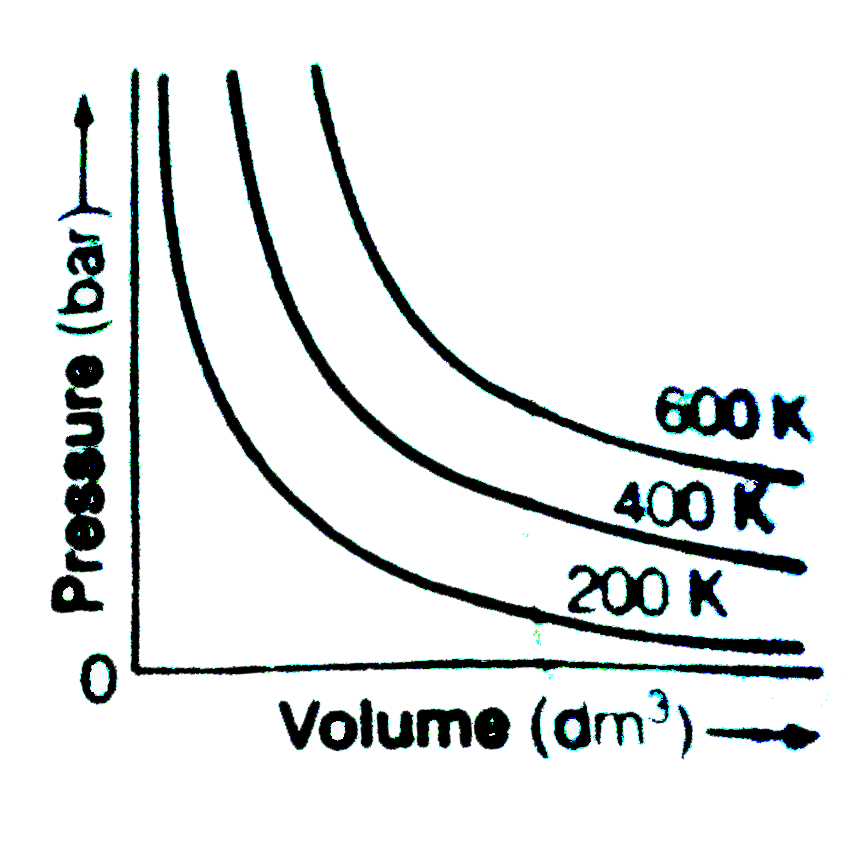Heat change of a process, in which volume remains constant, is represented by
The correct Answer is:A
To solve the question regarding the heat change of a process in which the volume remains constant, we can follow these steps:
Step 1: Understand the First Law of Thermodynamics
The first law of thermodynamics states that the change in internal energy (ΔU) of a system is equal to the heat added to the system (Q) minus the work done by the system (W):
ΔU=Q−W
Hint: Recall that the first law of thermodynamics relates heat, work, and internal energy.
Step 2: Identify Work Done at Constant Volume
In a thermodynamic process, work done (W) can be expressed as:
W=−PΔV
where P is the pressure and ΔV is the change in volume.
Since the volume remains constant in this process, ΔV = 0. Therefore, the work done is:
W=−P⋅0=0
Hint: Remember that if there is no change in volume, there is no work done by the system.
Step 3: Substitute Work Done into the First Law Equation
Substituting W = 0 into the first law equation gives:
ΔU=Q−0
Thus, we can simplify this to:
Q=ΔU
Hint: When work done is zero, the heat added to the system equals the change in internal energy.
Step 4: Conclusion
The heat change of a process in which the volume remains constant is represented by:
Q=ΔU
This means that the heat change (Q) is equal to the change in internal energy (ΔU).
Hint: Look for the relationship between heat and internal energy when volume is constant.
Final Answer
The correct representation of the heat change of a process in which volume remains constant is:
ΔU (Option 1).
The first law of thermodynamics states that the change in internal energy (ΔU) of a system is equal to the heat added to the system (Q) minus the work done by the system (W):
ΔU=Q−W
In a thermodynamic process, work done (W) can be expressed as:
W=−PΔV
where P is the pressure and ΔV is the change in volume.
W=−P⋅0=0
Substituting W = 0 into the first law equation gives:
ΔU=Q−0
Thus, we can simplify this to:
Q=ΔU
The heat change of a process in which the volume remains constant is represented by:
Q=ΔU
This means that the heat change (Q) is equal to the change in internal energy (ΔU).
The correct representation of the heat change of a process in which volume remains constant is:
ΔU (Option 1).
Topper's Solved these Questions
- THERMODYNAMICSBOOK - AAKASH INSTITUTE ENGLISHCHAPTER - THERMODYNAMICSEXERCISE - SECTION-B
20 Videos
- THERMODYNAMICSBOOK - AAKASH INSTITUTE ENGLISHCHAPTER - THERMODYNAMICSEXERCISE - SECTION-C
13 Videos
- THERMODYNAMICSBOOK - AAKASH INSTITUTE ENGLISHCHAPTER - THERMODYNAMICSEXERCISE - TRY YOURSELF
66 Videos
- THE SOLID STATE BOOK - AAKASH INSTITUTE ENGLISHCHAPTER - THE SOLID STATE EXERCISE - Assignment (SECTION - D) (ASSERTION-REASON TYPE QUESTION)
20 Videos
Similar Questions
A process in which volume remians constant is called
View SolutionThe thermodynamic process in which temeprature remains constant is
View SolutionAn open vessel at 27∘C is heated until 3/8th of the air in it has been expelled. Assuming that the volume remains constant, calculate the temperature at which the vessel was heated
View SolutionIn an isothermal process,………………….remains constant.
View SolutionAn ideal gas undergoes a process in which co-efficient of volume expansion of gas γ, varies with absolute temperature by the relation γ=2T. Let C is molar heat capacity in this process and Cp.CV are molar heat capacities at constant pressure and volume respectively. Then
View SolutionThe variation of pressure with volume of the gas at different temperatures can be graphically represented as shown in figure. On the basis of this graph answer the following question.
(i) How will the volume of a gas change if its pressure is increased at constant temperature ?
(ii) At a constant pressure, how will the volume of a gas change if the temperature is increased from 200 K to 400 K ?

View SolutionEntropy (S) is a thermodynamic variable like pressure P, volume V and temperature T. Entropy of a thermodynamic system is a measure of disorder of molecular motion. Greater is disorder , greater is entropy. Change in entropy of a thermodynamic system is the ratio of heat supplied to absolute temperature.In an adiabatic reversible process, entropy remains constant while in any irreversible process entropy increases. In nature the processes are irreversible , therefore entropy of universe is continuoulsy increasing.
When milk is heated , its entropy :
View SolutionStatement-I: it is possible for both the pressure and volume of a monoatomic ideal gas of a given amount to change simultaneously without causing the internal energy of the gas to change.
Statement-2: The internal energy of an ideal gas of a given amount remains constant if temperature does not change. it is possible to have a process in which pressure and volume are changed such that temperature remains constant.
View SolutionAn ideal gas under goes a quasi static, reversible process in which its molar heat capacity C remains constant. If during this process the relation of pressure P and volume V is given by PVn=constant, then n is given by (Here CPandCV are molar specific heat at constant pressure and constant volume, respectively):
View SolutionAir open vessel at 127∘C is heated until 1/5th of air in it has been expelled. Assuming that the volume of vessel remains constant the temperature to which the vessel has been heated is
View Solution
